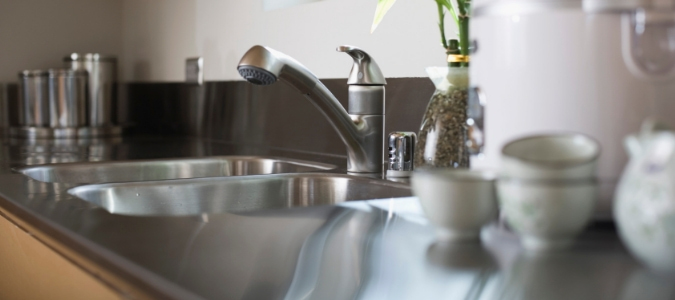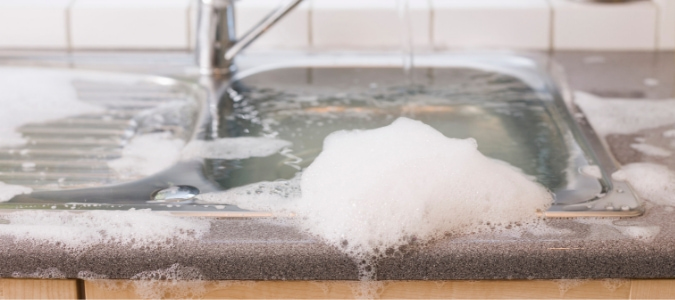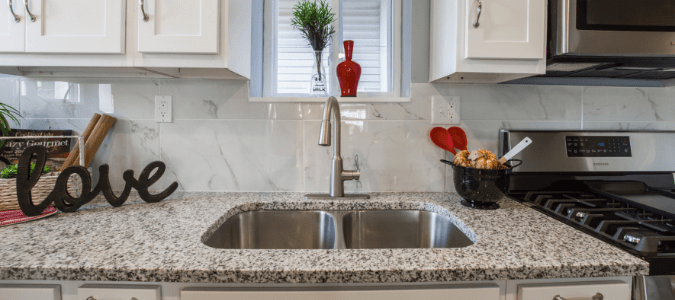Knowing how to clean a garbage disposal is necessary for the upkeep of a home. Like any kitchen appliance, garbage disposals need a thorough cleaning once in a while, or else bacteria can start to accumulate. Most of the food items you throw into it will disappear for good. But small chunks can get stuck in various parts of the garbage disposal and eventually rot. Oil and certain vegetables can also leave residues that can cause bacteria buildup.
To help you keep your garbage disposal grime-free, here’s an in-depth guide on how to clean it properly. We also include troubleshooting tips that can help address any issues. However, it’s always best to contact a plumber for severe problems so that you don’t cause further damage to your garbage disposal.
A Step-by-Step Guide to Cleaning Your Garbage Disposal
Cleaning your garbage disposal isn’t a complicated task and should take no more than 30 minutes. First, you’ll have to gather some tools and materials, but they are most likely already in your home. Have these things ready before you get started:
- Sink stopper
- Half cup of baking soda
- Dish soap
- 1 cup of vinegar
- 1 cup of rock salt
- Ice cubes
- Water
- Citrus peels
- A kitchen sponge with a rough side
- Rubber gloves
Once you have these items, follow the steps below to deep clean your garbage disposal:
- Switch off your garbage disposal to prevent it from suddenly running during the cleanup. Your hands won’t be near the grinder at the bottom, but it never hurts to be safe. You can unplug it from the outlet or switch off the breaker.
- Scrub the baffle. This is the part that prevents food particles from splashing up while the garbage disposal is running. Put dish soap on the rough side of your sponge and clean its grooves and underside.
- Rinse the gunk from your sponge, reapply dish soap and scrub the top and sides of the grinding chamber. Keep doing so until your sponge comes away clean. You can stop here or continue with the other steps if you are dealing with a smelly garbage disposal.
- Add a half cup of baking soda to the grinding chamber and follow with 1 cup of vinegar. Immediately cover the drain with your sink stopper to trap the fizzy mixture, which creates a scrubbing motion inside the garbage disposal. Let it fizz for at least 10 minutes.
- Remove the sink stopper, pour hot water down the drain and then start your garbage disposal. If you have two sink basins, it’s best to do the steps simultaneously.
An alternative is to use ice instead of baking soda. Ice cubes are great at scrubbing the insides of garbage disposals and dislodging any food bits that might have gotten stuck. You can follow these steps if you want to try this method:
- Fill the grinding chamber with ice cubes and pour vinegar. You can use a cup of rock salt as an alternative to vinegar.
- Turn on the garbage disposal and let warm water run until all the ice is gone.
- You can keep repeating the steps until there’s no more grime or odor.
- Finish off by throwing in a few citrus peels to add a fresh scent.
Make it a weekly habit to clean your garbage disposal. If you don’t use it that often, it’s still a good idea to scrub it down every two weeks to eliminate any stale odors.
Garbage Disposal Troubleshooting
Knowing how to clean your garbage disposal is one thing. But it’s another to fix issues you may encounter with this appliance. You can try pressing the reset button if it is acting up. But if that doesn’t work, there might be a more serious issue. There could be a jam in the mechanism, an electrical problem or a faulty connection. Here are the most common garbage issues and their solutions to help you troubleshoot.
It Won’t Turn On
If your garbage disposal isn’t turning on, try the most obvious fixes first. Make sure it is plugged in, and then press the reset button. If that doesn’t work, go to your main service panel, check if its breaker has tripped and then reset it if it has.
If it is still not working, there might be a wiring issue with its switch. You can take it apart to see if there are any loose wire connections and tighten them. If there are none, you might be dealing with a broken switch.
It Is Leaking
Garbage disposal leaks can occur in various places. There can be a leak in the hose that connects the garbage disposal to the dishwasher or the one that empties waste from the garbage disposal to the drain. There can also be a leak at the sink flange or the part where the garbage disposal connects to the bottom of the sink.
For dishwasher connection leaks, try tightening the hose clamp or replacing the hose if the leak persists. For drainpipe leaks, you can check the bolts that attach the drainpipe to the garbage disposal and tighten them if they’re loose. If that doesn’t fix the leak, remove the gasket seal and replace it with a new one.
To fix sink flange leaks, remove the garbage disposal unit and tighten the mounting bolts attaching the flange to the sink. If that doesn’t address the issue, the plumber’s putty may be at fault. You can try placing a new ring of plumber’s putty between the sink and the flange.
Most homeowners opt to contact a plumber instead of trying to resolve a garbage disposal leak themselves. A plumber will have a reliable fix to any leak you may have.
It Drains Slowly
There are many possible reasons for a slow-draining garbage disposal. You can start by making sure nothing got stuck in the garbage disposal that shouldn’t be there. Turn off power to the garbage disposal and then use tongs to feel around for any large objects that may have gotten lodged in the unit. If you can’t find any obstructions, the garbage disposal may be dirty. Use the steps listed above to clean. your garbage disposal. If you’re still having issues, you can use a sink auger. At this point, you may want to contact a plumber to fix the problem.
While it can be tempting to use a chemical drain cleaner, it is never wise to do so with garbage disposals because they can damage your pipes over time.
It Doesn’t Grind
If your garbage disposal turns on but doesn’t grind, that is a sign of a jammed flywheel. There’s most likely food or a foreign object stuck between the impellers, but it shouldn’t be too difficult to remove. First, turn off the unit. Then, insert the offset wrench that came with the garbage disposal unit into the flywheel turning hole and turn it clockwise to free the flywheel.
Alternatively, you can use the handle of a wooden spoon or a similar tool as a lever. Insert it down the drain and push the flywheel free. Peak down into the garbage disposal with a flashlight and remove the object that caused the jam with a pair of tongs.
If you’ve tried all these solutions but still can’t fix your garbage disposal, turn to the plumbing pros. They have the necessary tools and know-how to get your garbage disposal running again.
When to Replace Your Garbage Disposal
Garbage disposals are heavy-duty appliances, but that doesn’t mean they last forever. Even if you maintain your garbage disposal well, you’ll have to say goodbye to it around the 10-year mark. Here are some signs it’s time to put your current garbage disposal to rest and purchase a new one.
- You are always pressing the reset button. While it’s there to help garbage disposals recover from clogs or heavy loads, you shouldn’t have to use it regularly. Frequent resets can mean your unit is getting old and can’t function normally anymore.
- Your garbage disposal is making unusual noises. If you hear metal grinding sounds, check to see if there’s a lost object, like a spoon inside. But if there are none, it could be a sign your garbage disposal’s components are misaligned and are grinding against each other. It’s worth fixing it if it’s a new unit, but it might be time to let it go if it has served you a long time.
- There are lingering odors. It’s normal for garbage disposals to develop an unpleasant smell, but it should go away after a thorough cleaning. If yours continues to stink after using baking soda, vinegar, ice cubes and lemon peels, it could be a sign that it is time for a replacement.
- It is losing power. If you can’t turn it on or it shuts off while in use, it could be an indicator of a failing motor. Your garbage disposal might be on its last leg.
To keep your garbage disposal running smoothly for as long as possible, always have the water on when using it to help flush away food waste. In addition, never place oil, stringy vegetables, coffee grounds and bones in it. Lastly, never attempt to grind large portions of food.
The Bottom Line
Knowing how to clean garbage disposal is a handy skill. It will keep your kitchen clean and safe and your garbage disposal running for years. But if you encounter problems with your unit, you should contact a plumbing specialist. The pros have the tools and expertise to fix your garbage disposal issues.
ABC Can Get Your Garbage Disposal Working Again
A garbage disposal that isn’t working can cause huge disruptions in your life. Instead of prolonging the issue by trying to fix it yourself, contact ABC Home & Commercial Services. Our licensed plumbing pros will efficiently locate the issue and then get to work on making all garbage disposal repairs.



